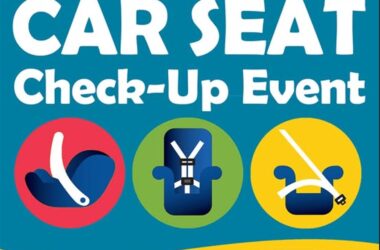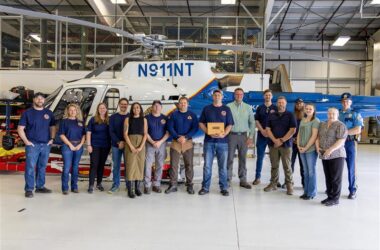October is Blindness Awareness Month and local students are attempting to educate their peers.
Visually impaired 10th Grader Maria Maes has been sharing blindness facts at River City Academy’s morning assemblies.
Maes: “There’s 19 days in October from the 1-31, school days, so what we’ve been doing every day, we have 19 little known facts.”
Maes is one of three braille reading students in the Kenai Peninsula Borough School District; she said if other students have questions about her condition, she’d rather them ask her.
Maes: “I’m sure I’m not the only one who hears the word disability related to us and cringes. I’m hoping that the blindness awareness is basically going to make sighted people realize hey, they’re not that much different just because they’re blind. Yeah you need to make things into a format that they can read and maybe accessibility but those are subtle things compared to them living a life.”
Special Services Teacher Jordana Engebretsen has been with the district organizing blindness awareness events for five years; she is completely blind, which helps her connect with her students.
Engebretsen: “Sometimes I talk to them about body language, about what to do when you are with somebody in the room. Just three days ago, my friend here, Maria was telling me, ‘Miss Jordana, you don’t understand it, I don’t know who’s in a room. How am I going to make friends?’ And I said, ‘Well when Miss Jordana goes to a school, to a teacher’s lounge, I have no idea who they are there either. I just have to go in and sit down and start a conversation to the left or the right’.”
Blindness Awareness Events in the KPBSD:
October 9: Visually impaired students will read Braille books to second graders at Soldotna Elementary at 9:15 am.
October 21: A Braille Treasure Hunt has been scheduled for students at SOHI. The students will learn the basic code of Braille and use that to try to find out what is printed in Braille on clue cards. The Vision Program is working to schedule Braille Treasure Hunts at Kenai Central High School and River City Academy as well.
November 6: CELEBRAILLE will be a celebration open to the community from 12:00 noon until 1:30 pm at the Soldotna Public Library. The public is invited to learn about blindness and braille with games and prizes.
Below are the Blindness Awareness Facts being shared with KPBSD students this month:
Here are 19 facts about blindness:
1. Only about 10-15% of people who are blind or visually impaired “see” total darkness. The majority of people who are considered blind have some sight, rather than no sight at all. That is, they have some residual vision, whether it is light perception, color perception, or form perception.
2. Blindness does not entail compensatory powers. Although one may learn to pay greater attention to one’s hearing, for example, the hearing does not actually organically improve. Some people believe that persons who are blind or visually impaired often possess a sixth sense and are psychic or able to foresee the future. Also there is common belief that those persons are musically gifted. Unfortunately, for those people who are blind or visually impaired, there are no miraculous new powers awakening, no strange new perceptions, and no brave new worlds to explore.
3. 90% of visually impaired people live in low- and middle-income countries. For these people the access to preventive care education, curative services and quality rehabilitation is not yet universally available.
4. An estimated 82 % of all people with blindness are over 50 years old. This number is expected to increase with the world’s population aging. The leading cause of blindness for these people is cataract which is a curable condition.
5. Globally about 80% of all visual impairment is avoidable.
6. People with diabetes are 25 times more likely to become blind than people without diabetes.
7. Nearly 2% of Alaska population consider to be blind or visually impaired.
8. Due to different circumstances about a quarter of visually impaired people in the USA never graduate from high school. Only 13% have a college diploma.
9. With proper training and opportunity, the average person who is blind or visually impaired can compete in terms of equality with the average person who is sighted. In other words, the person who is blind or visually impaired can be as happy and lead as full a life as anybody else.
10. People who are blind or visually impaired are by and large much more independent than others give them credit for. Many are mobile and independent. Many view their blindness as a mere physical nuisance and not a disability.
11. Braille is a system for reading and writing English. It is a code, not a language. There are more than 200 symbols for letters and contractions including contractions that represent whole words, parts of words, and shorter forms of words.
12. Louis Braille invented braille when he was just 15 years old. The simple system of raised dots that are read by touch is still used by blind people to read and write. Today
13. Braille works with computer technology like email to give blind people access to the same information as their sighted peers.
14. There is a Braille Code for almost every foreign language you can imagine! Even math, computer science, and music all have their own unique Braille systems. Unfortunately, only 10 percent of blind children are taught to read and write Braille.
15. Some people believe that dog guides know where to go and how to get there without their handlers telling them. The truth is that the handlers know where they are going, not the dog guides. Dog guides cannot tell red lights from green lights in traffic. Rather, the person who is blind or visually impaired listens to the flow of traffic, determines when it is safe to cross, and then signals the dog to go forward. However, if a car is coming, the dog is taught to refuse to obey the command.
16. Less than 2% of Americans who are blind or visually impaired use a white cane for orientation and mobility.
17. For working age adults reporting significant vision loss, only 40.2% were employed in 2013.
18. There are approximately 10,000 guide dog teams currently working in the United States. It is only about 2 percent of all people who are blind and visually impaired work with guide dogs.
19. Braille was developed around 1829 by Louis Braille. At the time of the development of the Braille code, there were several methods of reading for people who were blind, but none were very efficient. One of the codes that was used employed a system of tying knots in a string to represent different letters. Louis Braille based his system on an existing system of raised dots for reading.






